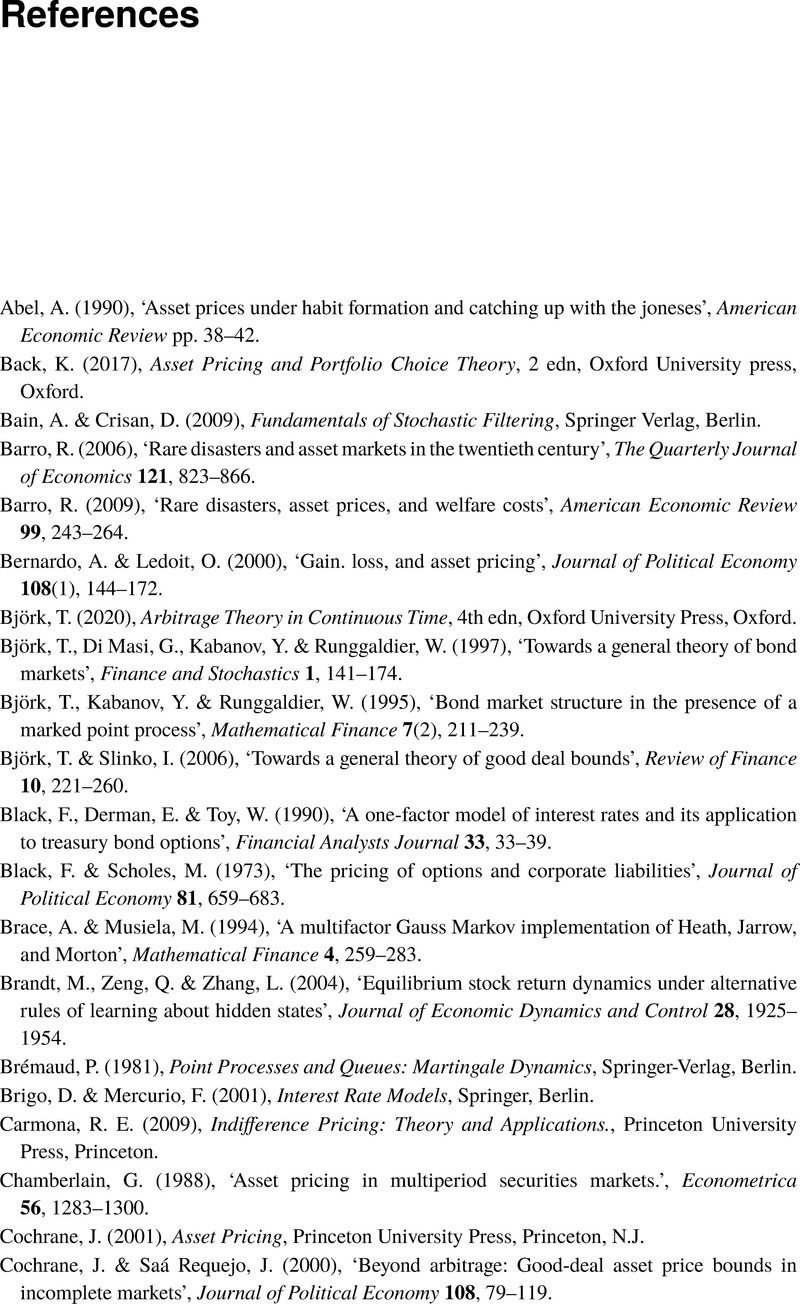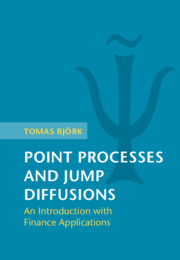References
Published online by Cambridge University Press: 27 May 2021
Summary

- Type
- Chapter
- Information
- Point Processes and Jump DiffusionsAn Introduction with Finance Applications, pp. 298 - 301Publisher: Cambridge University PressPrint publication year: 2021



